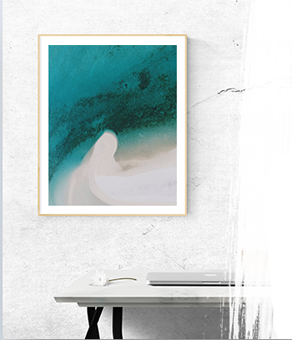.jpg)
How To Frame Jigsaw Puzzles With Art To Frames and Tru-Vue
By John Ranes II, , CPF, GCF
Award-Winning framer, industry writer, and educator, Tru-Vue Consultant
Do you frame puzzles? This is a common question that we framers often hear from potential customers and probably with more frequency during the Covid pandemic that has created a buyers frenzy on puzzles that has not been seen in years. This relaxing and challenging pastime has gained huge attention as families gather at home looking for new things to do with their time.
We have always framed puzzles and realize that, like anything from fine original art to sports jerseys, a puzzle well-framed is another way of personalizing your home décor with something you created yourself. Like many inexpensive art forms, a puzzle can be framed very basically with simple mouldings, or it can be treated with the maximum WOW presentation incorporating multiple mats, liners, and floating components. It all depends on how open the customer is to invest a bit more for a finished design appearance. (Not really all that different than other projects that we engage at the design table.)
When the customer states, “This is JUST a puzzle”, you might be selling a frame and glass only, but this shouldn’t restrict you from reaching for a moulding that offers a bit more pizzazz and fun to the design. And of course, suggesting Tru Vue Conservation Clear® Glass or Museum Glass® still makes sense in reducing the potential fading of their puzzle. After all, when being framed for a family room or rec room, the customer still would like their framed piece to retain its original color for more than a year.
The framed Wallace & Gromit puzzle works nicely with black edging around the puzzle’s perimeter and as suggested, the mode is “Fun”, and that’s part of the presentation – Puzzlers (yes that is a word that the pandemic taught me truly exists) have fun doing puzzles and so the presentation should reflect that same mood.

Mounting Puzzles – Options
So this might be a good place to discuss the mounting of puzzles. Because they are so different, customers are sometimes concerned that THEY need to do something special prior to bringing in the puzzle to their framer. In truth, a simple understanding of what a puzzle is makes the answer easy and straightforward. Puzzles are printed posters mounted to a thicker substrate, chipboard, blue or gray stock that is cut into many pieces – but the key is that it is still a decorator-grade poster. When we frame inexpensive décor art like posters, prints, and photos we want them to lay flat without undulation to a sturdy substrate. So it seems logical that these puzzles could be mounted in a similar manner.
We ask our clients to bring the puzzle to us laying on a sturdy piece of board. Some puzzlers will use the commercially made rolls or folding boards for transport but getting the puzzle to the shop in one piece is the key. Once in the shop, the puzzle can be flipped with foam core boards in a “sandwich fashion” where dry mount adhesive can be positioned, tacked, and trimmed. Flip again to orient the board on the mounting substrate which might be a sheet of foam board, or one already mounted with a sheet of colored mat board or fabric. (This latter idea would be when you design the puzzle to float above a colored background.)
For those that are squeamish about flipping the puzzle over, an extra set of hands is helpful, and/or the use of office binder clips will keep the components from shifting.
Although many of us like to use Modge Podge or Puzzle Saver brushed on the surface, this framer would prefer to see the puzzle as clean and clear as originally assembled. These craft store products will work to adhere but they sometimes will produce a slight “haze” over the surface of the printed surface. And once this adhesive coating is applied to the surface it makes the task of putting it into a dry mount press a little tricky with potential sticking to the release papers.
Back to Design Ideas
Below is another example of framing a puzzle straight into a frame. This is “Missing Migrants” by Charley Harper of Cincinnati, Ohio. This renowned artist has had many of his pieces made into 300-1000 piece puzzles and published by Pomegrannate Communications.

Frames For Puzzles Of Any Size
One of the perks of framing with Art To Frames is that you can frame in almost any size. This is extra helpful for any panoramic, extra-long, puzzle.

No matter the puzzle size we have the perfect picture frame for you and the perfect Tru-Vue glass options to protect it for years to come.


















